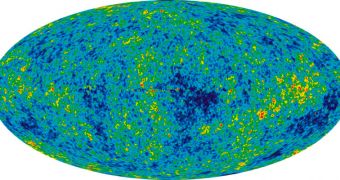Astrophysicists have a relatively solid background of data about what happened after the Big Bang, and how the Universe evolved to its current form. What they are a little hazy on is the process that took place millionths of a second after the initial event, and which triggered the Cosmic expansion.
In a new investigation, a team of scientists drew from the experience of experts from various realms of physics to analyze the way the Universe inflated thousands of times over within trillionths of a trillionths of a second.
Immediately after the Big Bang, the Cosmos is believed to have existed in a super-dense and hot state, which has been expanding and cooling ever since. But the current rate of expansion is nothing compared to the one experienced right after everything was exploded into being.
This massive expansion is usually termed inflation, and this is the leading theory the international astronomical community adheres to when trying to explain why the Universe looks and acts the way it does today.
When thinking about how inflation may have acted in the first fractions of a fraction of a second following the Big Bang, researchers are always put in the corner when trying to find the right words.
Inflation “would take a region the size of an atomic nucleus or a proton, and stretch it to a size exponentially greater than our observable Universe at present,” explains expert Paul Steinhardt.
“Superlatives are not enough here. Incredible, remarkable, unbelievable amounts of stretching,” adds the scientist, who holds an appointment as a cosmologist at the Princeton University.
“At the moment it’s our best theory, but it could be literally on the wrong track. It’s important to remember that it’s not a fact,” adds Perimeter Institute cosmologist Latham Boyle.
The two researchers are the authors of a research paper published in the December 6 issue of the esteemed scientific journal Physical Review Letters, which showcases a series of seemingly-unrelated observations that, if taken together, tilt the balance in favor of inflation.
“You take two completely different sets of measurements. If those two numbers match, either that’s a remarkable coincidence, or inflation was the cause. This is the new test that we’re introducing,” Steinhardt explains, quoted by Wired.
The theory also helps explain why the Universe is uniform in appearance, and why regions that could never communicate with each other share a host of common traits. If communication is impossible, then surely both areas come from the same source.
“Why would you expect two regions of the Universe to have identical properties if they never had a chance to communicate with one another?” Steinhardt says.
“Before inflation, the only thing you had to say was, ‘I don’t know the answer, but we have to suppose it is so’,” adds the expert, one of the first scientists to ever propose this theory, decades ago.

 14 DAY TRIAL //
14 DAY TRIAL //